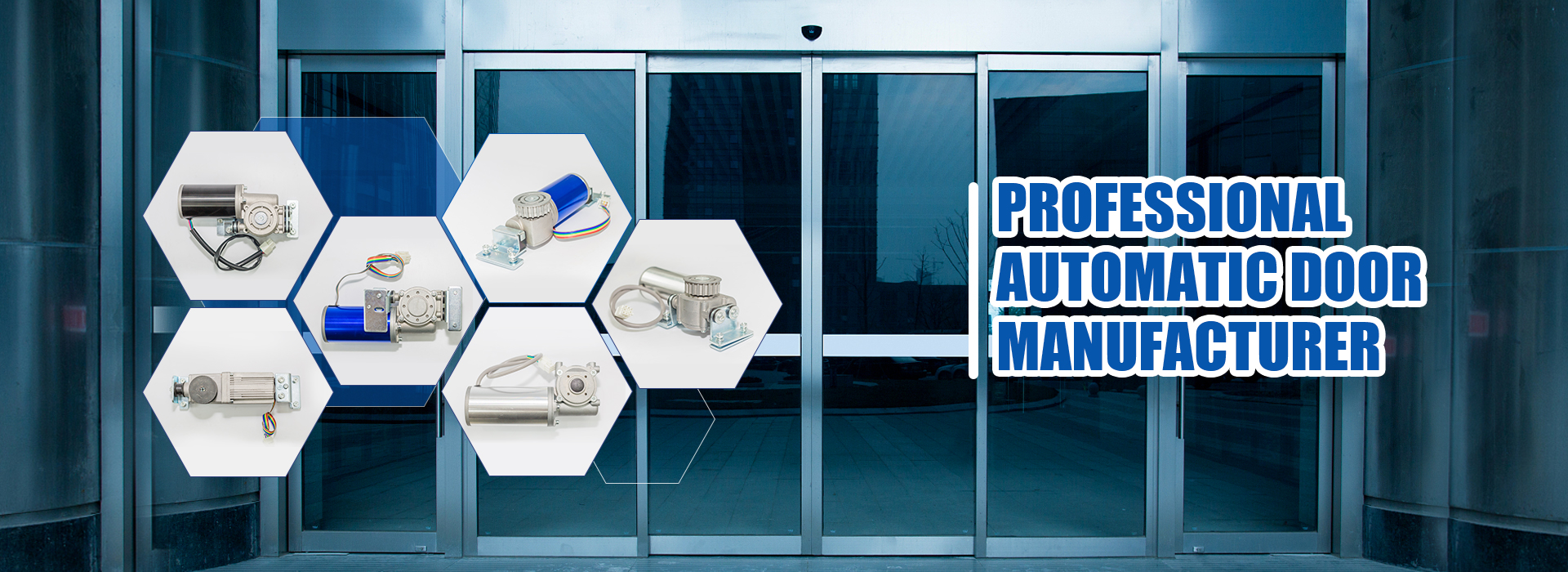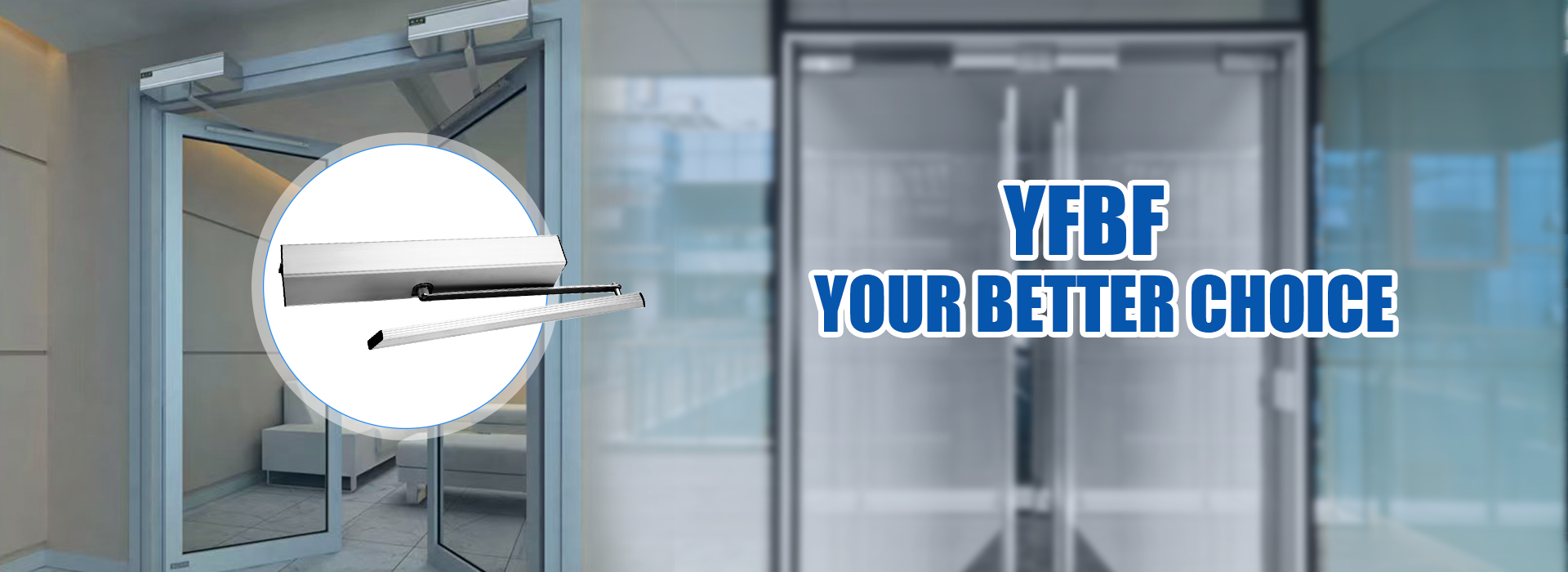
Innovation in automatic door motors, such as the automatic sliding door motor, plays a crucial role in enhancing efficiency and convenience. As industries evolve, they demand advanced features in automatic door systems. Energy efficiency and smart technology integration have become essential, with approximately 60% of new commercial installations incorporating these innovations.
Key Takeaways
- Energy-efficient automatic door motors can reduce electricity consumption by up to 30%, leading to lower operational costs and a smaller environmental footprint.
- Smart automation features, like mobile app control and voice activation, enhance convenience and security, allowing users to manage doors remotely.
- IoT integration enables real-time monitoring and predictive maintenance, improving functionality and reducing unexpected repair costs.
Energy-Efficient Motors
Energy-efficient motors are transforming the landscape of automatic door systems. These advancements focus on reducing energy consumption while maintaining high performance. Many modern automatic sliding door motors utilize brushless DC technology. This technology allows them to consume up to 30% less energy than traditional AC models. Additionally, these motors often feature lower standby power consumption, which contributes to overall energy savings.
Several key technologies enhance the energy efficiency of automatic doors:
| Technology/Feature | Description |
|---|---|
| Insulated and Low-E Glass Doors | Reduces heat transfer, maintaining interior temperatures, beneficial for reducing heating/cooling costs. |
| Thermally Broken Doors and Frames | Prevents cold exterior temperatures from affecting the interior environment. |
| Adaptive Motion Sensors | Distinguishes between intentional and accidental movement, minimizing unnecessary door openings. |
| Air Curtain Integration | Creates a barrier against external air, improving indoor climate control and reducing HVAC costs. |
These features work together to create a more efficient system. For instance, adaptive motion sensors help ensure that doors only open when necessary. This reduces energy waste and enhances user convenience.
Moreover, energy-efficient automatic door motors provide smoother and quieter operation. They often have standby power usage of less than 1 watt, which is significant since they remain idle 99% of the time. This efficiency is particularly important in commercial settings where doors operate frequently.
In addition to energy savings, these motors meet various certifications and standards. For example, the ANSI/BHMA A156.19 certification ensures that power-operated doors perform reliably and sustainably. Compliance with ANSI A156.10 outlines requirements for energy-efficient swing doors, including testing procedures to assess their performance.
Overall, the shift towards energy-efficient motors in automatic door systems reflects a growing commitment to sustainability and cost-effectiveness. As technology continues to evolve, these innovations will play a crucial role in shaping the future of automatic door operations.
Smart Automation Features

Smart automation features are revolutionizing the functionality of automatic door systems. These advancements enhance convenience, security, and user experience. In 2025, many automatic door motors will incorporate various smart technologies that allow users to control their doors with ease.
Key Smart Features
- Mobile App Control: Users can manage their automatic doors through smartphone applications. This feature allows for remote operation, making it easy to open or close doors from anywhere.
- Voice Activation: Integration with voice assistants like Alexa, Google Assistant, and Apple HomeKit enables hands-free control. Users can simply speak commands to operate their doors.
- Custom Schedules: Many modern systems allow users to set routines for opening and closing doors. This includes geofencing capabilities, which automatically open doors as users approach.
These features not only improve convenience but also enhance safety and security. The use of microcomputer intelligent control in automatic door systems allows for various activation devices and safety accessories. This ensures that doors operate smoothly and securely.
Safety and Security Enhancements
Smart automation features significantly improve the safety and security of automatic door systems. Here are some notable enhancements:
| Feature | Description |
|---|---|
| Reinforced Steel & Aluminum Security Doors | High-impact resistance for enhanced security. |
| Access-Controlled Automatic Security Entrances | Keyless entry and biometric integration for controlled access. |
| Tailgating & Piggyback Prevention Systems | Systems designed to prevent unauthorized access. |
Additional safety features include electronic multi-point lock systems. These locks enhance security and ease of use. Automatic locking occurs when the door closes, ensuring that the premises remain secure.
The adoption of smart automation features in commercial installations has surged. For instance, Europe holds approximately 29% of the market share, with a notable increase in sliding door adoption in Germany and the UK. Sustainability policies have also led to a 25% rise in energy-efficient automatic entrances.
Cost Implications
Integrating smart automation features into automatic door motors involves various cost aspects:
| Cost Aspect | Details |
|---|---|
| Initial Investment | High-end smart windows and doors can cost thousands for full home installation. |
| Long-term Savings | Smart features can lead to substantial energy savings, potentially paying for themselves. |
| Installation Costs | Vary from a few hundred to a few thousand dollars based on system complexity and retrofitting. |
While upfront costs may be significant, the long-term benefits often outweigh the initial investment. Smart automation not only enhances convenience but also contributes to energy efficiency and security.
IoT Integration
IoT integration is transforming automatic door motors, enhancing their functionality and efficiency. This technology allows for seamless communication between devices, enabling users to control and monitor their doors remotely. The benefits of IoT integration in automatic door systems are significant:
| Benefit | Description |
|---|---|
| Remote Control Capabilities | Facility managers can operate doors from anywhere, adjusting settings and troubleshooting remotely. |
| Occupancy Detection | Doors adjust based on occupancy, conserving energy and enhancing security by keeping doors closed. |
| Predictive Maintenance | Real-time monitoring predicts failures, allowing proactive maintenance and reducing unexpected repair costs. |
| Integration with Security Systems | Doors work with security systems for comprehensive safety, controlling access and monitoring premises. |
Users can operate and monitor doors remotely via smartphone apps. This enhances convenience and provides real-time access control. Additionally, integration with building automation systems allows centralized control of various functions, improving energy efficiency.
IoT technologies, such as motion sensors and occupancy detection, ensure doors open and close precisely when needed. This not only enhances user convenience but also saves energy. Predictive maintenance analytics help identify potential issues before they escalate, minimizing downtime.
However, IoT integration also presents security challenges. Users must be aware of risks such as exposure of IP addresses, lack of encryption, and weak default passwords. Addressing these challenges is crucial for maintaining the security of automatic door systems.
Sustainability Considerations
Sustainability plays a vital role in the development of automatic door motors. Manufacturers increasingly focus on eco-friendly practices to reduce environmental impact. Energy-efficient motors can cut electricity consumption by up to 30% compared to traditional AC motors. This reduction leads to lower operational costs and a smaller environmental footprint.
Moreover, these motors help maintain stable indoor temperatures. They minimize heat loss or gain, which reduces the workload on heating and cooling systems. This efficiency translates into significant cost savings for businesses.
Key Sustainability Practices
| Evidence Description | Impact |
|---|---|
| Energy-efficient automatic door motors can reduce electricity consumption by up to 30% compared to traditional AC motors. | Lower operational costs and smaller environmental footprint. |
| These motors minimize heat loss or gain, helping maintain stable indoor temperatures. | Reduces workload on heating and cooling systems, leading to cost savings. |
| Smart sensors optimize energy use by minimizing unnecessary activations. | Enhances overall efficiency in busy environments. |
Using sustainable materials also impacts the performance and lifespan of automatic door motors. Environmentally friendly materials contribute to reduced energy consumption and ensure a longer service life. Additionally, these motors can be easily recycled, which helps reduce waste at the end of their life cycle.
Environmental Benefits of Recycling
- Recycling components from automatic door motors conserves natural resources by reducing the need for mining and processing raw materials.
- It significantly lowers energy consumption; for example, recycling aluminum can save up to 95% of the energy needed to produce it from raw materials.
- The process of recycling reduces greenhouse gas emissions, contributing to climate protection efforts.
Regulations like the Consumer Product Safety Act ensure that manufacturers meet safety standards. While these regulations do not specifically address sustainability, they promote the production of reliable and safe products. This indirectly supports sustainability efforts in the industry.
In summary, innovations in automatic door motors, such as energy-efficient designs, smart automation features, and IoT integration, significantly enhance building efficiency. These advancements lead to lower operational costs and improved accessibility. As the market grows, staying informed about these developments will help consumers make better choices.
Key Trends to Watch:
- The automatic door market is projected to grow at a CAGR of 7.25% from 2025 to 2032.
- Energy-efficient solutions will continue to drive sustainability efforts.
FAQ
What are the benefits of energy-efficient automatic door motors?
Energy-efficient motors reduce electricity consumption, lower operational costs, and minimize environmental impact.
How do smart automation features enhance security?
Smart features allow for remote access control, occupancy detection, and integration with security systems, improving overall safety.
What role does IoT play in automatic door systems?
IoT enables remote monitoring, predictive maintenance, and seamless communication between devices, enhancing functionality and efficiency.
Post time: Sep-19-2025



